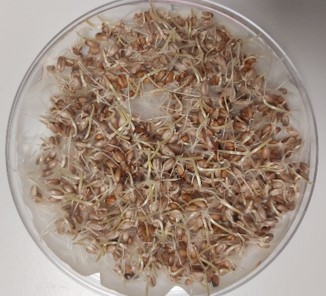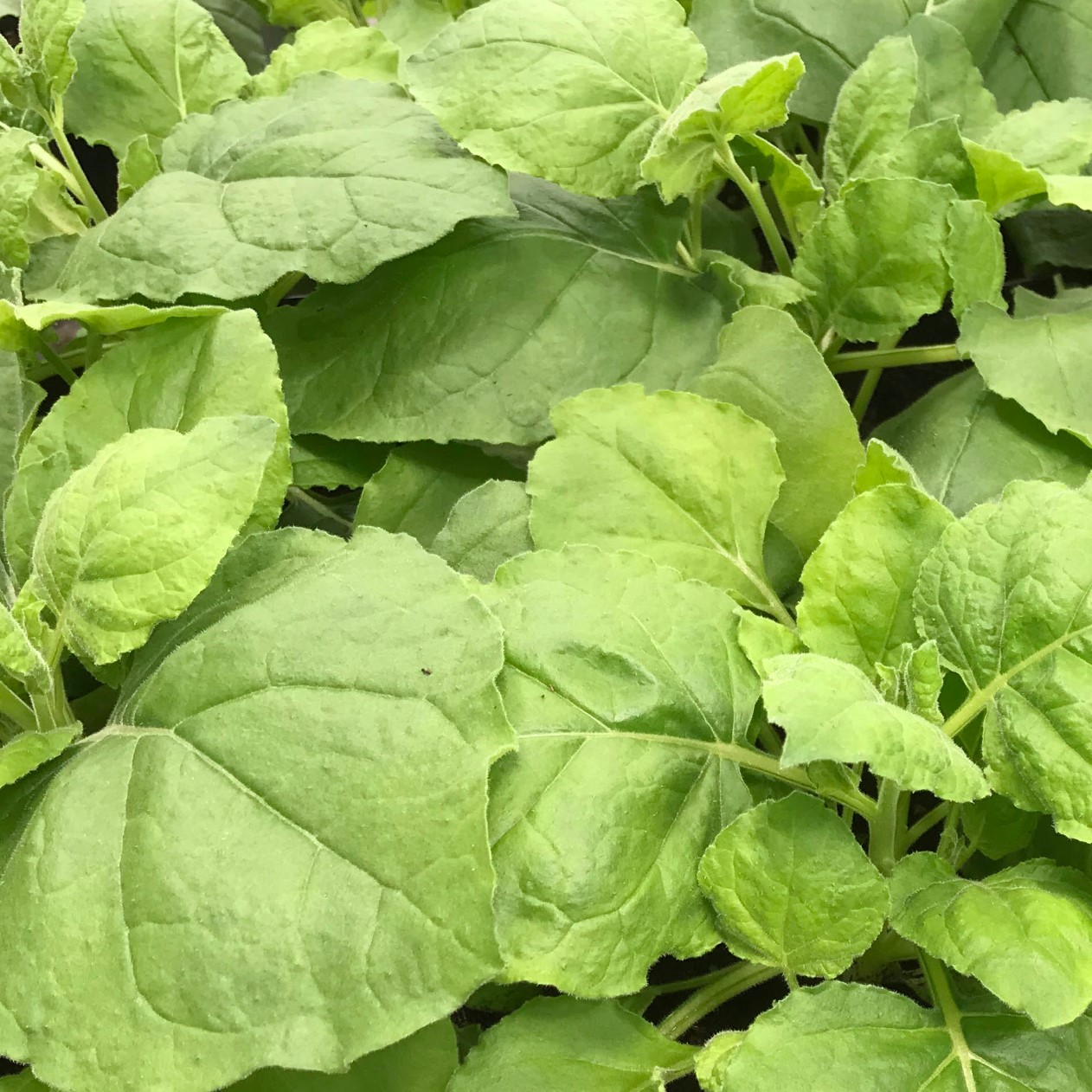Master's thesis projects (30 or 60 ECTS)
All the listed projects below are available at the Department of Plant Breeding (SLU Alnarp). In some cases, it can be flexible regarding the degree level of the projects

Unlock the potential of oilseed crops for Nordic agriculture through data analysis and oil composition profiling
Are you interested in sustainable agriculture and real-world data analysis? Join our project to explore the potential of field cress (Lepidium campestre), a newly domesticated winter-hardy oil crop, to enhance local food security and reduce fossil fuel dependency in the Nordic region. Background: Northern Sweden's agriculture faces challenges due to harsh climates, low profitability, and limited crop options. While rapeseed and turnip rape are commonly grown, they struggle with poor winter hardiness and low yield stability. Field cress offers a promising alternative due to its winter hardiness and adaptability to the Nordic climate. However, understanding its performance over multiple years and environments is crucial to maximizing its potential.
This MSc project involves analyzing data from two years of multi-location field trials in northern Sweden, comparing: Winter hardiness and survival rates of three oilseed crops, yield performance and stability across different environments, oil content and composition using gas chromatography (GC), and phenological traits. What you will do: Analyze multi-environment trial data to assess performance and adaptability, extract and analyze oil from field cress seeds to determine fatty acid profiles, compare results across genotypes and environments, present findings through visualizations and contribute to a scientific publication. This project is suitable for an MSc student in Agronomy, Plant Breeding, Biology, Genetics, or a related field. The project is based at SLU Alnarp in collaboration with SLU Umeå, starting in Fall 2025. Read more about field cress here.
Supervisor: Cecilia Hammenhag, cecilia.hammenhag@slu.se

Structure-functional properties of the industrial protein extrudates from grain legumes
Are you interested in new protein food from grain legumes which is locally sourced and produced? Faba bean and pea are two crops with very promising protein characteristics and good alternatives to soya, although to the major part so far are used as animal feed. This project focuses on industrial protein concentrates from faba bean and pea, and their new use in extruded food products. Functional properties and structure of faba/pea extrudates differ depending on the product size and type, as well as on the protein chemistry. This is of a particular relevance for the extrudates when absorbing water and fat in meat replacers. You will have a unique opportunity to work with newly produced faba/pea protein concentrate foods and to find out key answers to the questions that the food producers and researchers have.
We aim to address few major questions on the faba/pea protein concentrates and determine their protein profile and chemistry behind before and after extrusion. We also aim to characterize structure and morphology of the extrudates in order to explain water and fat absorption in the newly extruded meat replacers. The project is a collaboration with industrial stakeholders within SLU Grogrund which is a centre for breeding of food crops.
Supervisor: Ramune Kuktaite, ramune.kuktaite@slu.se

GWAS anlaysis to identify genomic regions regulating Blackleg resistance in Brassica species
Blackleg disease, caused by Lepthospaheria maculans, is a serious disease of Brassica crops, oilseed rape (Brassica napus) and turnip rape (B. rapa). Both of these species account for more than 95% of oilseed production in Sweden. Cultural practice is not effective method to control the disease. Fungicide applications are linked to health and environmental risks and the alternatives are getting less due to increasing restrictions. Developing varieties of B. napus and B. rapa resistant to blackleg is considered the most sustainable approach for managing the disease. Germplasm collection, identifying resistant genotypes within the germplasm, and dissecting the genetic basis of the resistance trait are crucial steps for developing resistance varieties.
In this project, B. napus and B. rapa accessions collected from the Nordic region and globally will be screened for resistance against Blackleg disease. Using the genotype data of these accessions, Genome-wide-association study (GWAS) will be conducted to identify genomic regions, genes, and alleles linked to the Blackleg disease. The project involves methods such as culturing of L. maculans, conducting disease screening assays, phenotyping of the resistance, GWAS analysis to detect Marker-trait association, and bioinformatics analysis of the genome regions of interest.
Supervisor: Kibrom B. Abreha, kibrom.abreha@slu.se

Plant tailor-made pheromones
Pheromones are the best alternative to conventional pest control with pesticides for growers in the horticultural and agricultural sectors. However, chemical production of pheromones is both costly and can give rise to environmentally hazardous waste. This project focuses on oil crops that produce precursors for pheromones in seed oil. These precursors are fatty acids and can be converted to pheromones. No oil crop produces these fatty acids naturally. Still, by transferring the appropriate enzymes with gene technology, plants can be created that contain many of the desired fatty acids in substantial quantities. You will work with four transgenic lines of the oil crop Camelina sativa that produce different target fatty acids and the amount of them varies depending on which fatty acid it is.
Your task will be to figure out how we can improve these lines. You will use lipid analysis together with enzyme studies of the different transgenic Camelina lines to find bottlenecks in the plant's ability to synthesize these target fatty acids. The results will be used to create a map of the flow of the target fatty acid into seed oil.
Supervisor: Ida Lager, ida.lager@slu.se

Phytoremediation potential of Lepidium campestre - A sustainable solution for heavy metal contamination in agricultural soils
Heavy metals are released into soils from natural and anthropogenic sources and are crucial for the physiological and metabolic activity of an organism. However, beyond certain concentrations, heavy metals are toxic to the habitat and living organisms. Heavy metal contamination in agricultural fields is one of the main constraints limiting crop yield and quality. Consuming edible parts or food products produced in heavy metal-contaminated soils increases the risk of chronic diseases such as diabetes, cancer, and kidney and immune system dysfunction. The presence of Cadmium (Cd), which is one of the heavy metals, in Swedish agricultural soils has been reported and there are initiatives to reduce Cd levels in major crops produced in Sweden. This requires applying sustainable methods to reduce the Cd concentration in agricultural fields for instance using phytoremediation. Phytoremediation uses plants to clean up contaminated environments. It is eco-friendly method and improves soil fertility and soil microbiome composition. One of the plants with phytoremediation potential is Lepidium campestre. At the Department of Plant Breeding, L. campestre has been targeted for domestication as a new bioenergy crop.
In this project, you will investigate the phytoremediation efficiency of L. campestre in Cd-contaminated soils. The methods applied include measuring Cd content of contaminated soils and in tissues of L. campestre, and conducting expression analysis of Cd-transporter genes. Developing crops with phytoremediation potential is crucial for reducing heavy metal contamination in agricultural soils, thereby improving food safety and crop productivity. In war-torn regions, where heavy metals from military activities often contaminate the soil, such crops could play a key role in restoring agricultural land, making it safer to produce food and helping communities recover from conflict.
Supervisor: Kibrom B. Abreha, kibrom.abreha@slu.se

Synthetic biology for sperm whale oil production in plants
Wax esters are a crucial ingredient of the global industry. Unfortunately, nowadays wax esters are mostly obtained from the depleting and environmentally harmful fossil reserves. As we are decarbonizing our industry, we might soon face a problem with a diminished wax ester supply. Improving the sustainability of industrial crops, which accumulate wax esters in seeds, might just be the solution we need. An especially significant application of wax esters is their use for lubricant production. In the past, a suitable wax ester-rich lubricant was spermaceti, obtained from the sperm whale (Physeter macrocephalus). Since the rightful ban on sperm whale hunting, the market has coveted a replacement. This niche could potentially be filled with spermaceti-like, plant-derived wax esters; a possibility, which we will explore during the proposed experimental work. Previous attempts to bioengineer industrial crops to synthesize wax esters in seeds, stumbled upon several bottlenecks: incorrect wax ester composition, low wax ester content in seeds, decreased plant fitness and decreased seed germination.
In this project You would try and help to overcome these hurdles by testing genes and gene promoters from jojoba (Simmondsia chinensis), a non-crop shrub, naturally accumulating wax esters in seeds. Throughout Your work in this project You will learn the following: synthetic biology design, Golden Gate cloning, bacteria cultivation and transformation, sequencing analyses, analyses of genomes and transcriptomes, transient and stable plant transformation, plant cultivation, gas chromatography analyses, confocal microscopy and more.
Supervisor: Kamil Demski, kamil.demski@slu.se

Advancing germinated wheat: innovations in product development, nutrition, and health benefits
Germination, the natural process of sprouting seeds, enhances the nutritional value of grains like wheat by activating enzymes that break down starches, increase bioavailability of nutrients, and reduce anti-nutritional factors. This process significantly boosts levels of vitamins, minerals, antioxidants, and bioactive compounds, making germinated wheat a healthier alternative to regular wheat. It also improves digestibility and may offer functional health benefits, such as better glycemic control and potential reductions in chronic disease risk.
In our germination project, we aim to address several research gaps related to germinated wheat, focusing on optimizing nutritional profiles, enhancing functional health benefits, and improving processing techniques. Our project seeks to develop safer, more nutritious germinated wheat products with broad market potential, ultimately promoting healthier dietary options for consumers.
Supervisor: Monalisa Sahoo, monalisa.sahoo@slu.se

Food and feed protein from green leaves – Increasing the protein recovery rates
Green leaves, e.g., in the form of sugar beet leaves or lucerne, can be a source of protein for both humans and non-ruminant animals. But first the proteins need to be extracted. Our process method start with pressing juice from the leaves, resulting in a green juice containing most of the protein, and a fibrous pulp. However, the recovery rates low, as much of the protein remains in the pulp.
In this project, we investigate different methods for increasing the protein recovery, and you would be part of this development.
Supervisor: Anna-Lovisa Nynäs, anna-lovisa.nynas@slu.se

Investigation on long day light regime influence on the oil crop turnip rape cultivated in North Sweden
Cultivation of crops in North Sweden faces a major challenge in the short field season, which limits the number of crops that can be grown and reach full maturity. One way to possibly compensate for the short field season could be to identify, through plant breeding, crop varieties that have the ability to take advantage of the greater number of sun hours (long days) during June and July when northern Sweden basically has continuous light. Such varieties can then conceivably develop faster and reach maturity within the shorter field season available. When breeding for better variants of the oilcrop turnip rape (Brassica rapa spp olifera) for cultivation in North Sweden, beside improving its winter hardiness it is also important to take into consideration its ability to respond positively to the long-day light conditions.
This project will use accessions of turnip rape identified to respond positively to constant light (mimic long day conditions in the North). These accessions will be grown in the Biotron under normal day/night light conditions and constant light respectively. Different phenotypic traits of the plant material will be recorded at specific time points as a measure of the different accession. Plant material from the different accessions and in the different light treatments will be sampled and analysed for gene expression (trancriptome analysis). Phenotypic and genotypic data will be analysed for markers (SNP) linked to a positive response to the long day condition.
Supervisor: Anders Carlsson, anders.carlsson@slu.se